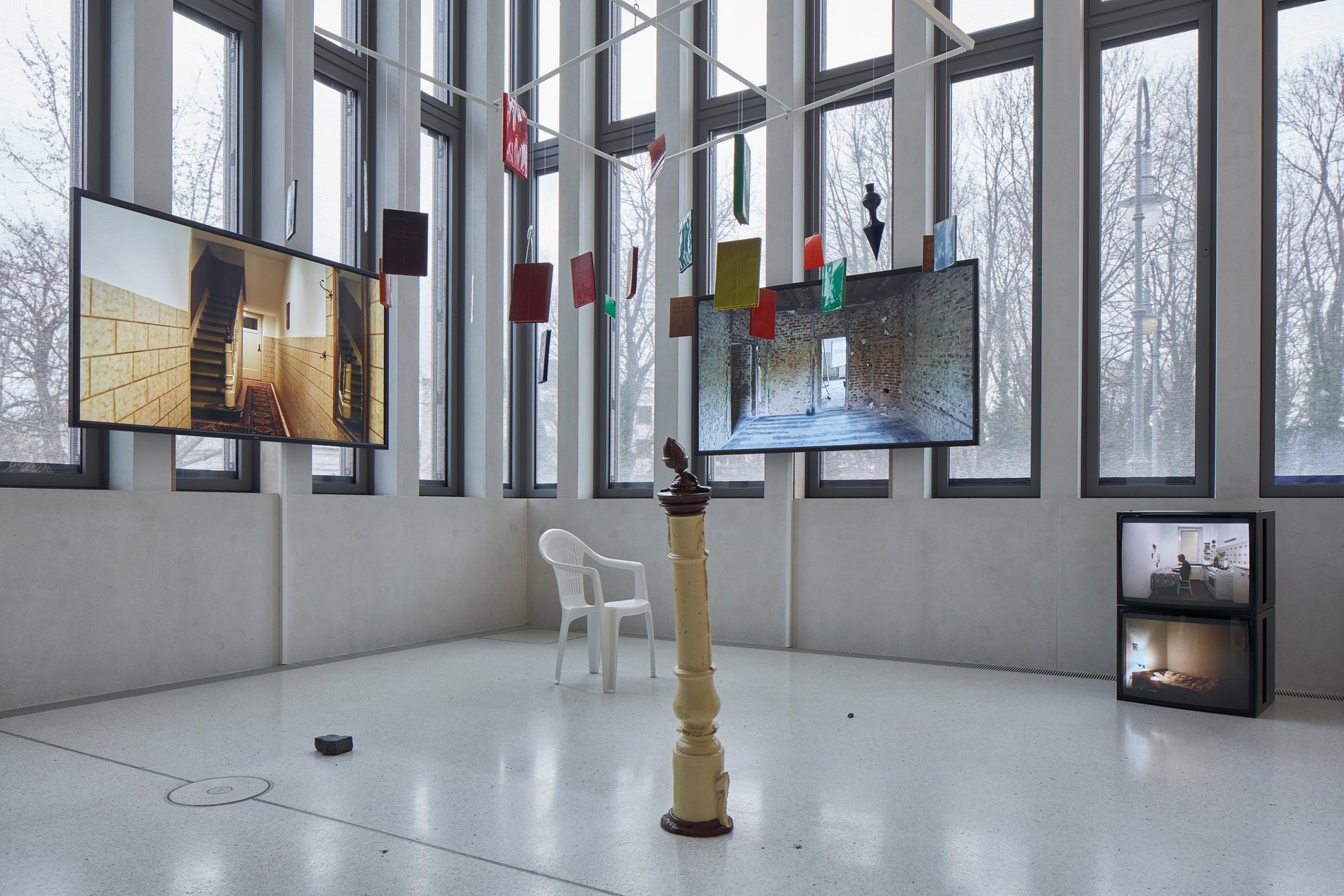Videos and objects, dimensions variable
Gregor Schneider’s contribution to the exhibition is part of his ongoing focus on the house where Nazi propaganda minister Joseph Goebbels was born, in the Rheydt district of Mönchengladbach. The artist, who was raised in the same urban district, found and bought the house and some of its furnishings. He made it public and produced a 3D-scan of the entire building. Furthermore, he documented in painstaking detail how he stayed there himself and subsequently gutted the interiors, which he presented elsewhere as ruins. Alongside documentary footage of his artistic appropriation of the residence, Schneider also exhibits silicone-dipped documents featuring right-wing nationalist ideology that he found in the house. Starting with Goebbels’ normal family and living environment, Schneider tries to find clues to the emergence of his hostile world view. By conveying theseideas into space and opening up the direct experience of the architecture, he draws the viewer’s attention to the function and importance of seemingly banal built environments. At the same time, he demands that society takes responsibility by deliberately considering how to deal with historically burdened places.


